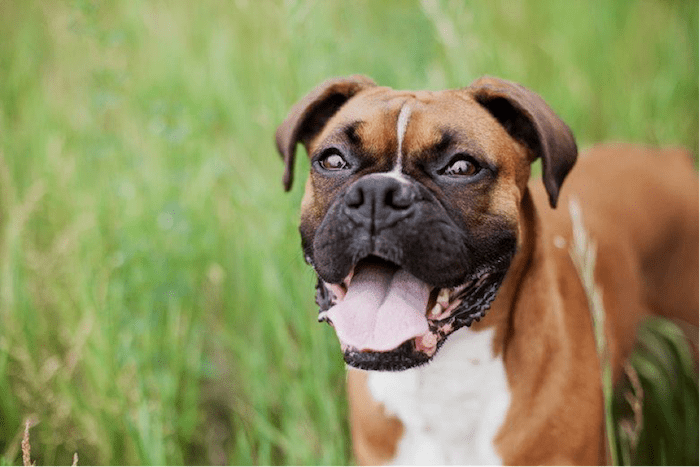A dog is a man’s best friend is a statement that’s as true as it is old. Having a dog means not only getting to spend time with a furry, loving creature but also having someone that’s always excited for you whenever you come back home or give it some playtime. However, the sad part is that they’re still living beings and as such, they’re bound to get sick from time to time. Unfortunately, Cushing’s disease is one of the most common dog health problems, so it’s important to understand what it is and how to deal with it properly in order to provide your pet with the best possible care.
1. What Is Cushing’s Disease?
Cushing’s disease is a condition that affects the adrenal glands. It’s important to note that most dogs can live a normal life if treatment is administered timely and correctly. However, Cushing’s disease in dogs can shorten their life expectancy, especially if left untreated. In that case, a dog can live 2-4 years. There are two types of this disease: Congenital Adrenal Hyperplasia (CAH) and Hyperadrenocorticism (Hyperadrenocorticism). Congenital adrenal hyperplasia is a genetic disorder that only affects female dogs and it’s caused by a defect in one of the enzymes responsible for cortisol production. In this case, there’s too much of it being produced and it affects the dog’s growth and development. On the other hand, hyperadrenocorticism is a non-genetic condition that’s brought about by tumors in the adrenal glands or pituitary gland or an excess of certain corticosteroid medications. This condition affects both male and female dogs, although it’s more common in older canines. The symptoms are quite similar in both cases, so differentiating them can be difficult. Certain breeds are at a higher risk of developing Cushing’s disease, such as the West Highland White Terrier, Dachshunds, Beagles, and Basset Hounds. That said, any dog could potentially get this condition.
2. Symptoms And Effects
Every dog owner should know what to look for when it comes to this. That way you can be able to recognize the symptoms and take the dog to the vet, and if you already suspect that your pet is suffering from this condition, it will allow you to preemptively start the treatment before the disease progresses. The most common signs and symptoms of Cushing’s disease include:
- Increased thirst and urination
- Getting tired easily or lethargic
- Weight gain, despite a lack of appetite
- Gradual loss of muscle tone and reduced strength
- Hair loss on the body, but not the head or tail
- Skin discoloration and itching
The list of effects that this disease can have on the dog’s body is quite long. For example, if left untreated it can cause osteoporosis, pancreatitis, anemia, hypertension, diabetes mellitus, and impaired liver function, and even death. There are even more diseases than the one mentioned above can cause. So if you suspect that your pet is suffering from this condition, then take it to a vet right away.
3. Potential Causes
It’s important to note that this condition isn’t something that you or your other pets can catch from the dog that has it. As you’ll see in a bit, in some cases, there isn’t much you can do to prevent it from happening. Still, it’s always better to know what causes it.
- Overuse of corticosteroid medication – Veterinarians are very strict when it comes to prescribing medicine with corticosteroids in them, but in some cases, it can have adverse effects as well. This is why you should always be especially mindful of your dog’s behavior while he’s on them.
- The dog started producing too much cortisol due to having a tumor in the pituitary glands – usually benign, but can also be cancerous. These tumors are known as pituitary adenomas or hyperplasias.
- The disease has genetic origins, so if both parents have the defective gene then the pup will likely suffer from it too. However, this doesn’t mean that other dogs in the household are at risk of developing Cushing’s disease.
- Some infections in the dog’s body can lead to the overproduction of cortisol, but this is rare.
4. Treatment And Prevention
Fortunately, Cushing’s disease in dogs is usually treated very well through medication and surgery. One thing that you should do is to feed your canine high-quality, nutritious food so it doesn’t have to suffer from malnutrition. This will help improve the dog’s overall health and immune system. If your dog is diagnosed with Cushing’s disease, there are several things you can do at home in order to make the pup feel as comfortable as possible:
- Make sure the dog eats well and takes medications as instructed – Pets can be very stubborn, especially when they’re sick. However, you must make sure that your furry friend follows the vet’s instructions to a T.
- Besides diet and medication (if applicable), you should also provide it with extra care and attention. Of course, this doesn’t mean that you should reward the dog with food or even playtime for being sick! Just be there for it when it needs you, and try not to leave its side.
- Keep the pet’s skin healthy – Make sure that your pet always has clean, soft bedding where he can rest, and also make sure that you comb and bathe it properly.
- Make sure there’s plenty of fresh water at all times – Cushing’s disease can lead to increased thirst, so make sure that you always have water available for your dog.
5. Self-Care
Watching someone you love in pain can be hard – and taking care of a sick dog can be very emotionally draining. While it’s important that you provide your pet with the care it needs, you should also remember to take care of yourself. Many owners feel like it’s selfish to even think about that while their dog is unwell, but it’s actually beneficial for them as well. If you have enough energy, then you’ll be able to provide it with the care it needs. In that vein, you should always make sure that you get enough rest, eat healthily, and that you’re getting the emotional support you need from friends and family. You could also go on online forums and talk to other Cushing’s disease owners, where you can get advice about your dog’s condition, and simply talk to people that are going through a similar thing. If you need a night out – go for it. Recharge your batteries so that you can head back to your dog with a fresh mind and give it the care that it deserves.
Cushing’s disease in dogs is one of the most common dog health problems out there. It can be hard for owners to deal with, especially since they feel like their dog is suffering. However, despite this, it’s important that you take care of yourself as well – if not for your sake, then for your pet’s. Be mindful of how your dog is acting so that you can brief the vet on it. That will go a long way in enabling them to administer the proper treatment.



